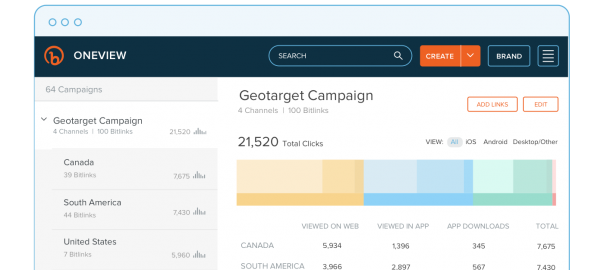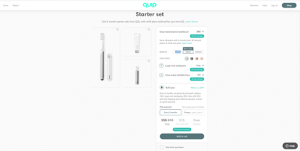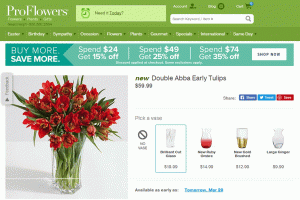— November 28, 2017
We know avocados are good on toast. And we know that avocados make for a good millennial joke or two.
The pear-shaped fruit is also Amazon’s entry into the brick-and-mortar retail space.
After Amazon’s recent acquisition of Whole Foods, the first thing the eCommerce giant announced was that it would be slashing prices.
Avocados went down almost a dollar in price, along with a few other carefully selected items.
It seems like too much of a coincidence that Whole Foods – nicknamed by some as “whole paycheck” – discounted the one item on the grocery list that hits shoppers the hardest. Americans spend $ 900,000 on avocados each month.
Brick-and-mortar isn’t going away anytime soon. And Amazon knows this.
Even though online sales are expected to surpass in-store sales this holiday season, people still prefer to shop in person.
As advanced as the online shopping experience gets with things like AR, VR, and dynamic content, we just can’t replicate the real human experience.
A month after the price cuts, Whole Foods reported a 25% increase in customer traffic.
So how are retailers supposed to compete with Amazon, especially as we enter the holidays, the biggest shopping season of the year? By finding your own “avocado”.
Location, Location, Location
More than half of all shoppers, 63%, use apps that require them to share their location. Use this to your advantage. Whether you have brick-and-mortar shops or you’re purely an eCommerce company, you can leverage this geographical data to encourage a purchase.
Here are some cool examples we’ve seen:
– Fall Rush, a big-box retailer, wanted to reach college students with offers on tablets and other electronics. To do this, they pulled IP addresses of college campuses and narrowed down buildings where a lot of students gathered, like lecture halls and student centers. The retailer then sent out student-focused ads with specific offers and creative personalized for each region.
– The Sephora app sends a push notification to users when they’re within range of a nearby store. One user received a notification that she still had a balance left on her gift card and was inspired to go in and make a purchase.
– Pantene geo-targets ads, serving up content based on the local weather. For example, it’s an unusually warm day, they might show you an add that says “Forecast: Frizz.”
Not sure where to get start collecting all of this data? Bitly can help.
Using OneView, a feature of Bitly Enterprise, can build a dashboard that tracks geo-targeted marketing campaigns. All you have to do is create links for each region and distribute them accordingly.
One major streaming service uses OneView to easily see which regions engage with different artists. By creating regionally targeted Bitlinks for in-app buttons and affiliates, it’s possible for the company to drill down into which artists are most popular per city, and whether fans are more likely to check out the album page or tickets for an upcoming concert.

Geo-targeted campaigns in OneView start with giving exclusive Bitlinks to each region you’re trying to measure. Once you’ve dedicated a Bitlink per region (or more, if you’re also using multiple channels per region), you can start distributing, promoting, and measuring.
Don’t Forget That Human Touch
Despite what the reports might say, that holiday foot traffic went down 10% for brick-and-mortar stores last year, retail still can’t go without that human touch.
It’s not just Amazon – a lot of direct-to-consumer eCommerce companies are expanding into brick-and-mortar stores. Just think about Bonobos, Warby Parker, Rent The Runway, and Casper.
Combine your online and offline offerings to make it hard not to buy.
Think about offering a pick-up-in-store option on your checkout page, in-store tablets that allow customers to skip the checkout line and ship their purchase directly to their front door, or a shared returns and exchanges policy between online and brick-and-mortar stores.
Walmart is doubling down on their in-store experiences this year to maintain an edge over online competitors.
Shoppers who visit one of the 4,700 stores can get a photo with Santa or extra assistance from Walmart’s holiday helpers.
Holiday helpers will help expedite the in-store experience by helping shoppers pick up their pick-up-in-store orders, guiding them through busy sections of the store, and to the shortest lines for checkout.
Walmart will also be throwing more than 20,000 holiday parties at their Supercenters and offering more opportunities for children to play with toys right in the store.
Bringing The Offline Online
As the online retail market becomes more saturated, it will take even more to cut through the noise and connect with consumers.
A lot of eCommerce companies report that their biggest challenges include personalization, building a consistent customer experience, and integrating cross-channel insights.
Bridging your online and offline efforts can help build a more comprehensive view of what your customers are engaging with and where.
Shoppers don’t differentiate between online and offline. They look for convenience, relevance, and value first. And you should too.
Digital & Social Articles on Business 2 Community
(37)






